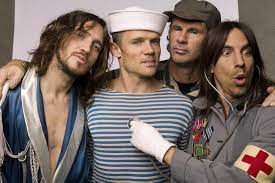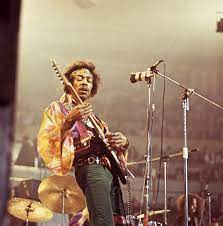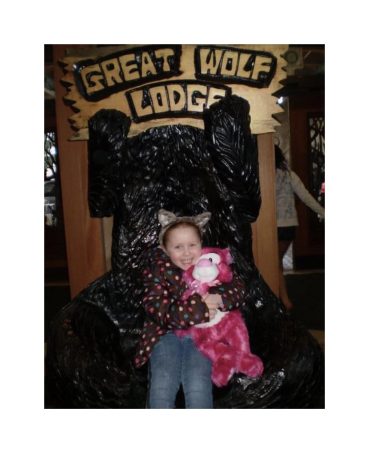The story behind Unbroken: What Jolie’s film missed
February 12, 2015
On May 27, 1943, a B-24 crashed into the sea. Louis Zamperini was on board, performing a search mission for a lost plane crew. As a child, he had been a notorious delinquent and troublemaker. As a young man, he ran the 5000 meter at the Berlin Olympics, finishing the race with a record-breaking 56 second last lap. When World War II began, he volunteered to become an air force bombardier and survived camp bombings and a mission that left his plane with over 1000 holes. All of these things were only the beginning of his adventures.
After the plane crash, he and the the other survivors endured 47 days on a life raft before becoming Japanese prisoners of war (POW). Angelina Jolie’s directing debut and new film Unbroken does a beautiful job of conveying the challenges and atrocities that Louis faced during his imprisonment in Japanese POW camps. It is a story of unbreakable will and perseverance in dehumanizing circumstances that will leave viewers moved. I believe that Jolie’s first effort is a great movie overall and was very impressed by the vivid cinematography and strong acting performances, but I was surprised that the movie focused almost exclusively on Zamperini’s war times. The following paragraphs touch on important details that were left out in the film.
Louis was born into an Italian immigrant family that struggled to feel accepted in American society. They settled in the small town of Torrance, California, where Louis ran wild, thieving from community members and developing an addiction to alcohol and cigarettes by the age of ten. His life changed when his older brother convinced him to run for the track team. After remarkably successful high school and college track careers, he made it to the 1936 Berlin Olympics, where his legendary last lap in the 5000 meter race was impressive even to Hitler. The German leader requested a brief audience with the young runner and famously remarked, “Ah, the boy with the fast finish.”
Soon after the Olympics, World War II began and Louis began his career as a bombardier aboard the Superman B-24. The plane was irreparably damaged during the air raid of Nauru, Japan, but Louis and most of his crewmates survived. Several days later, Louis, his best friend and the head pilot Phil, and a new crew went up in a defective plane called the Green Hornet to search the Pacific Ocean for plane crash victims. Mid-flight, the engines failed and the plane crashed into the sea. Louis, Phil, and a novice crewmember, Francis “Mac” McNamera, were the only men to surface. They climbed onto the life raft stored on the plane, hopeful that they would soon be rescued. Days passed. The starving men subsisted on small fish and albatross meat, when they could get it. Sharks circled the raft. On their 27th day at sea, a Japanese plane fired on them from above, but none of the men were injured. As the days wore on, Louis prayed that he would devote his life to God if he survived life on the raft. Mac died of starvation after thirty three days at sea and Louis and Phil sadly set his body adrift.
Fourteen days later, Louis and Phil floated into the territory of the Marshall Islands and were captured by the Japanese, who held them there for forty two days before sending them to the POW camp of Ofuna. In the years that followed, Louis was separated from Phil and sent to two other POW camps, Omori and Naoetsu, where he was tortured physically and psychologically by “the Bird”, a sadistic prison guard determined to break the former Olympian’s will. In Naoetsu, Louis was forced to perform backbreaking labor, carrying heavy baskets of coal onto barges for up to twelve hours a day, even through a crippling foot injury and a high fever. One of his worst punishments was to hold a heavy plank of wood above his head for thirty minutes straight, at gunpoint. At other times, the Japanese ridiculed him by forcing him to race Japanese runners in his emaciated condition, used him as a propaganda tool and test subject for poisons and medical torture, beat him, and even forced the other prisoners to line up and punch him in the face one by one.
When the Americans won the war, all of the POWs were freed, though their terrible experiences as Japanese prisoners would haunt them for the rest of their lives. Louis received a hero’s welcome when he returned to his hometown in America. He soon met and married Cynthia Applewhite, who supported his ambitions to return to the Olympics. Unfortunately, the foot injury that he had sustained in Naoetsu hindered him from achieving this dream. He would never run competitively again, but his worst injury was a psychological one.
For the first few years of his marriage, Louis was plagued by nightmares of “the Bird” tormenting him and descended into alcoholism as a result. Cynthia was about to leave him when she attended a sermon by evangelist Billy Graham and decided to give her husband a second chance. She brought Louis to the next week’s sermon, and an amazing thing happened. Graham’s words reminded Louis of the promise that he made on the raft, and he decided to give his life to God. After that night, he never had another nightmare. He became a Christian motivational speaker who preached forgiveness above all other virtues, and in 1950, he visited Japan and personally forgave many of the war criminals who had mistreated him during the war. Upon his return from Japan, he founded the Victory Boys camp for troubled boys in the San Gabriel Mountains, California. In 1998 and four days before turning 81, Louis ran a leg in the Olympic torch relay for the Winter Games in Nagano, Japan. The Bird, who had evaded capture in spite of being one of the top twenty Japanese war criminals, refused to see Louis during this time.
Louis and Cynthia remained happily married until Cynthia’s death in 2001. Louis was living in Hollywood, California, when he died of pneumonia on July 2, 2014, at the age of 97. His death occurred 70 years after the Federal Government mistakenly declared him killed in action.
Jolie’s film is a beautiful tribute to Zamperini’s incredible life. The movie focuses primarily on Louis’s horrific experiences in prison camp, giving only several sentences before the credits to tell of what happened to him after the war. Viewers who have read Unbroken, the biography by Lauren Hillenbrand may wish that more screen time was devoted to Zamperini’s pre and post-war experiences but will still appreciate the film’s main message, which is that strength, optimism, and courage in the face of hardship are the most valuable tools for winning the battle of life.












